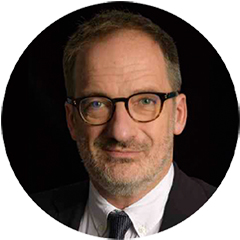SiC and its impact on Europe
There is no denying that SiC will play a pivotal role in the semiconductor landscape in the future and the power device market specifically.
When compared to typical semiconductors such as silicon, wide bandgap semiconductors such as silicon carbide (SiC) and gallium nitride (GaN) have superior electrical properties. They allow for the creation of smaller, lighter, and more efficient high-performance electronic devices and systems, particularly in applications demanding high power, high frequency, or high-temperature operation. Power devices are critical components for supplying and managing power in all types of electronic equipment, as well as for reaching a carbon-free, carbon-neutral society. Current demand is anticipated to increase further – especially given the electrification of the automotive industry.
The pandemic and recent geopolitical upheavals have underlined the importance of secure access to semiconductors – and with SiC having been dubbed the future of the compound semiconductor industry, a lot of movement has taken place all over the world.
In Europe, ST Microelectronics is building a SiC substrate manufacturing facility at its Catania site in Italy alongside the existing SiC device manufacturing facility. Back in 2022, onsemi inaugurated its expanded SiC fab in Roznov, Czech Republic which increased the company's SiC wafer production capacity by 16 times over the next two years. II‐VI (today Coherent) said in 2022 that it would accelerate its investment in 150 mm and 200 mm SiC substrate and epitaxial wafer manufacturing with large-scale factory expansions in both the US and Sweden. Infineon is increasing SiC production in Austria, and Wolfspeed is planning to build the world's largest SiC plant in Saarland, Germany.
But that’s not the only movement that has been witnessed. Over the past several years, the market has witnessed a considerable increase in M&A transactions. Between 2006 to 2017, there was only one transaction every two years in the compound semiconductor space. But since 2018, there have been six transactions yearly, exceeding historical records.
Since 2006 there have been eight M&A transactions in Europe in total, all of which occurred in 2018 and later, with ST and Infineon serving as the key participants. To keep their competitive edge in the SiC power device sector, both businesses have been strategically acquiring technological expertise.
Given the increasing significance of silicon carbide in our industry and the current market movement, Evertiq has invited Jean-Christophe Eloy, CEO and President of Yole Group, to participate as a keynote speaker at the Evertiq Expo in Sophia Antipolis, France on February 8, 2024, to talk about SiC and its impact on Europe.

“Power SiC devices are now adopted by multiple electric vehicle carmakers. It started with Tesla, then BYD, and now most of the high-end car manufacturers have announced models using SiC-based inverters. The market growth is impressive, as well as the related investment in crystal growth, wafering, epitaxy, device manufacturing, and power module assembly. ST Microelectronics is the leader at the device level, followed by Infineon Technologies. But what is the clear competitive landscape for Europe across the SiC supply chain? What could be the impact of the high investments in China and the USA? What can we expect in the next 5 years with the push from Soitec, as well as the new technologies developed by multiple other companies?”
The global power SiC device market is forcasted to grow to about USD 9 billion by 2028, a 31% increase over 2022, according to the 2023 edition of Yole Intelligence's Power SiC Report. Automotive applications, unsurprisingly, dominate the SiC market, representing 70% of the power SiC market in 2022, alongside a variety of industrial applications, such as transportation, energy, and telecommunications.
It is clear that SiC is a critical technology for the future of semiconductors, so join Evertiq Expo Sophia Antipolis on February 8, 2024, as we dig deeper into the market, investments and competitive landscape of SiC.
